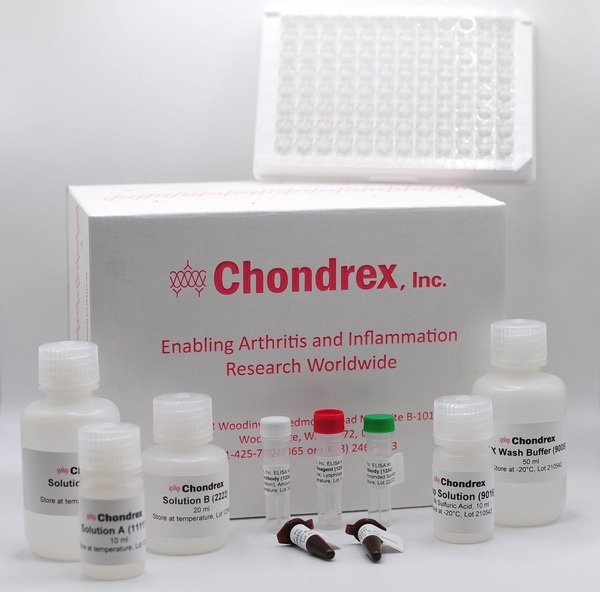The contamination of water and food by pathogenic microorganisms and their toxins is a serious issue for human health and safety (1, 2). Especially, enterotoxins (SEs) produced by Staphylococcus aureus (S. aureus) are highly stable, meaning pathological activity remains even after exposure to sterilization techniques and digestive proteases. Among the SEs, staphylococcal enterotoxin A (SEA) and B (SEB) cause enteritis and food poisoning, together with may involve in the pathogenesis of autoimmune-related diseases (4), such as atopic dermatitis (3, 5), food allergies (6,7), colitis (8, 9), arthritis (6, 10-12), and systemic lupus erythematosus (6, 13).
Lipopolysaccharide (LPS) is a major component of the outer-membrane in gram-negative bacteria. While the main role of LPS is to maintain the integrity of the bacteria envelope, LPS also binds to the CD14/TLR4/MD2 receptor complex on many cell types (14-15), such as B cells, macrophages, and dendritic cells, resulting in pro-inflammatory cytokine release from these cells (16). This activation of the innate immune response causes inflammation which may play important roles in obesity and chronic inflammatory diseases such as Crohn's Disease, Chronic Fatigue Syndrome, Ulcerative Colitis, and Rheumatoid Arthritis. Translocation of bacteria toxins from intestinal flora may also trigger the pathogenesis of autoimmune diseases (17-18).
While these antibody ELISA kits against environmental factors are useful as immune function evaluation tools, several considerations must be addressed before establishing study protocols. Here we would like to share these considerations to help users better choose kits and interpret results.
Bacterial Toxin Detection Kits
| Product | Catalog # | Price (USD) | |
|---|---|---|---|
 |
LPS Detection Kit | 6039 | 428.00 |
 |
Staphylococcal Enterotoxin A (SEA) Detection Kit | 6029 | 399.00 |
 |
Staphylococcal Enterotoxin B (SEB) Detection Kit | 6030 | 399.00 |
References
1. I. Sospedra, C. Soler, J. Mañes, J. M. Soriano, Rapid whole protein quantitation of staphylococcal enterotoxins A and B by liquid chromatography/mass spectrometry. J Chromatogr A 1238, 54-59 (2012).
2. C. Hedberg, Food-related illness and death in the United States. Emerg Infect Dis 5, 840-842 (1999).
3. N. Kamada, S. U. Seo, G. Y. Chen, G. Núñez, Role of the gut microbiota in immunity and inflammatory disease. Nat Rev Immunol 13, 321-335 (2013).
4. J. Li, J. Yang, Y. Lu, S. Wu, M. Wang, et al., Possible Role of Staphylococcal Enterotoxin B in the Pathogenesis of Autoimmune Diseases. Viral Immunol 28, 354-359 (2015).
5. S. W. Hong, M. Kim, E. Lee, J. Kim, Y. Kim, et al., Extracellular vesicles derived from Staphylococcus aureus induce atopic dermatitis-like skin inflammation. Allergy 66, 351-359 (2011).
6. E. Baharav, H. Gur, P. Fishman, L. Ziporen, M. Blank, et al., Superantigens and experimental SLE induced by idiotypic dysregulation. Clin Exp Rheumatol 14, 359-366 (1996).
7. K. Ganeshan, C. Neilsen, A. Hadsaitong, R. Schleimer, X. Luo, et al., Impairing oral tolerance promotes allergy and anaphylaxis: a new murine food allergy model. J Allergy Clin Immunol 123, 231-238 e234 (2009).
8. P. C. Yang, C. S. Wang, Z. Y. An, A murine model of ulcerative colitis: induced with sinusitis-derived superantigen and food allergen. BMC Gastroenterol 5, 6 (2005).
9. J. Lu, A. Wang, S. Ansari, R. M. Hershberg, D. M. McKay, Colonic bacterial superantigens evoke an inflammatory response and exaggerate disease in mice recovering from colitis. Gastroenterology 125, 1785-1795 (2003).
10. P. H. Wooley, B. Cingel, Staphylococcal enterotoxin B increases the severity of type II collagen induced arthritis in mice. Ann Rheum Dis 54, 298-304 (1995).
11. H. Nagai, Y. Takaoka, H. Kamada, H. Mori, The model of arthritis induced by superantigen in mice. Life Sci 55, PL233-237 (1994).
12. H. Nagai, Y. Takaoka, K. Kuwabara, H. Kamada, K. Kitagaki, The effect of SM-8849 on experimental arthritis in mice. Pharmacology 52, 377-386 (1996).
13. D. E. Scott, W. J. Kisch, A. D. Steinberg, Studies of T cell deletion and T cell anergy following in vivo administration of SEB to normal and lupus-prone mice. J Immunol 150, 664-672 (1993).
14. A. Poltorak et. al, Defective LPS signaling in C3H/HeJ and C57BL/10ScCr mice: mutations in TLR4 gene. Science, 282(5396): 2085-8 (1998).
15. R Shimazu et. al, MD-2, a molecule that confers lipopolysaccharide responsiveness on Toll-like receptor 4. J Exp Med, 189(11):1777-82 (1999).
16. A.J Ulmer et. al, Induction of proliferation and cytokine production in human T lymphocytes by lipopolysaccharide (LPS). Toxicology, 152: 37-45 (2000).
17. K. Terato et. al, Contribution of bacterial pathogens to evoking serological disease markers and aggravating disease activity in rheumatoid arthritis. PLoS ONE. 13, e0190588 (2018).
18. K. Terato, C. T. Do, H. Shionoya, Slipping through the Cracks: Linking Low Immune Function and Intestinal Bacterial Imbalance to the Etiology of Rheumatoid Arthritis. Autoimmune Diseases. 2015, 1-12 (2015).